Identifying the spring crop as the most productive and important crop of the year, the Ministry of Agriculture and Rural Development requires localities to prioritize reasonable crop scheduling. Because the 2023-2024 winter-spring crop is forecast to be warm, localities need to calculate the appropriate sowing time so that the flowering time is concentrated at the most optimal time.
In the spring crop of 2024, the whole province strives to cultivate over 74,000 hectares of rice, with a yield of over 7 tons/ha.
Arrange varieties and seasons to "avoid" unfavorable weather
According to the assessment of the National Center for Hydro-Meteorological Forecasting, the weather in 2024 is expected to be hotter due to the influence of El Nino. The temperature in winter this year may be 0.5 - 1.5 degrees Celsius higher than the average of many years. Specifically, in the early winter-spring period of 2023 - 2024, cold air is likely to be weak, severe cold and frost may appear late; the number of days with severe cold and frost tends to be less than the average of many years.
The Plant Protection Department believes that in 2024, in the Northern region, rice plants will have some pest problems such as rats, black-striped dwarf disease, leaf roller disease, and rice blast disease in the winter-spring crop.
To suit the weather conditions in 2024, the agricultural sector directs the production of late spring tea as the main focus, increasing the area of quality rice, varieties that are resistant to pests and adverse conditions. Of which, high-quality rice accounts for about 50% of the area, focusing on varieties: Dai Thom 8, Bac Thom No. 7, TBR279, Nhat rice...; high-yield rice varieties account for about 50% of the area, focusing on varieties: TBR225, Thien Uu 8, VNR20, DH12... Expanding the area of rice grown by machine to 20,000 - 25,000 hectares; encouraging people to accumulate and concentrate land to grow tea and the same varieties to apply maximum mechanization to production, while producing a large amount of products, facilitating consumption and increasing production efficiency. Sow seedlings from January 25 to February 6, 2024 (around the beginning of spring) by sowing young seedlings on hard ground with a dome frame covered with white plastic or sowing seedlings in trays, finishing transplanting before February 22, 2024.
In the spring crop of 2024, Dong Hung district strives to plant 11,102 hectares of rice, with a yield of 71 quintals/hectare or more.
Mr. Vuong Duc Hang, Vice Chairman of the District People's Committee, said: To proactively produce in warm weather conditions, the district directs communes, agricultural cooperatives, and related units to guide farmers to strictly implement the crop calendar and rice variety structure; communes with a tradition of planting early tea (VN10 variety, traditional glutinous rice, Taiwanese glutinous rice) adjust the sowing schedule, not sowing before December 20, 2023. Mass rice production needs to strictly follow the crop calendar according to the province's production plan and the district's production project to ensure spring rice blooms within a safe time frame.
Early forecasting, timely prevention and control of pests
A disadvantage of the 2024 spring crop production is forecasted to be the complicated occurrence of crop diseases. In 2023, the area infected with weedy rice (wild rice, wild rice, wild rice) in the whole province was 95 hectares, of which the spring crop was 56 hectares and the summer-autumn crop was 39 hectares. Weedy rice grows and develops strongly, competing directly for nutrients and light with transplanted rice, which can cause yield losses of 15-20% with weedy rice contamination of 35% or more, or even total loss if the weedy rice contamination is high. In addition, the Southern black-streaked dwarf disease that damages rice also appears sporadically in many localities in the province.
Mr. Mai Thanh Giang, Head of the Department of Crop Production and Plant Protection, said: In 2023, many localities such as Phu Luong, Dong Cuong, Dong Son, Dong Dong communes (Dong Hung); Nguyen Xa (Vu Thu); Dong Hoang (Tien Hai); Le Loi, Vu Thang, Vu Hoa (Kien Xuong) ... will apply improved rice cultivation techniques (SRI), planting wide and narrow rows to create conditions for rice to have the highest photosynthetic capacity, healthy rice plants, and good resistance to pests and diseases. In the spring crop of 2024, the agricultural sector also recommended that localities expand the cultivation area according to the process of integrated plant health management (IPHM), integrated pest management (IPM) and at the same time advise the Department of Agriculture and Rural Development to issue a plan to prevent and control black-striped dwarf disease and weedy rice.
Accordingly, the agricultural sector recommends that localities arrange a reasonable crop structure, plan concentrated planting areas; convert cultivation methods from direct sowing to hand-planting or machine-planting to easily identify and eliminate weedy rice. It is recommended to use rice varieties that meet quality standards (original varieties, certified varieties), and not use self-seeded rice in areas that have been infected with weedy rice from the previous crop for planting. The decisive "prevention" measure is field sanitation and disease source treatment. For black-striped dwarf disease, it is necessary to plow and bury the stubble to prevent the disease from occurring on rice straw, regenerated rice, clear grass on the field banks, irrigation ditches... to limit the hiding places of planthoppers and destroy the source of the disease. With weedy rice, after harvesting, it is necessary to keep the field surface moist to attract weedy rice seeds to germinate, then add lime powder, plow and soak the weedy rice seeds to rot, or use microbial products to quickly decompose straw and weedy rice seeds. Before the planting season, it is necessary to prepare the soil thoroughly and level the field before planting; at the end of the production season, it is necessary to observe and remove mixed rice flowers and destroy them to eliminate the source of spread before mass harvesting; rice areas infected with weedy rice by 60% or more need to be harvested separately, isolated (creating barriers, stretching small mesh nets on the field) and treated with the above farming measures to destroy weedy rice seeds in the field.
In addition, the 2024 spring crop is forecast to have lower rainfall than the average of many years, and the time between two water intakes is long, so the regulation and rational and economical use of water needs to be paid attention to by all levels, sectors and localities right from the beginning of the crop.

The time between two water intakes is long, so the regulation and rational and economical use of water needs to be given attention by all levels, sectors and localities right from the beginning of the season. Photo courtesy
Ngan Huyen
Source


![[Photo] General Secretary To Lam attends the 8th Congress of the Central Public Security Party Committee](https://vphoto.vietnam.vn/thumb/1200x675/vietnam/resource/IMAGE/2025/10/4/79fadf490f674dc483794f2d955f6045)
![[Photo] Bustling Mid-Autumn Festival at the Museum of Ethnology](https://vphoto.vietnam.vn/thumb/1200x675/vietnam/resource/IMAGE/2025/10/4/da8d5927734d4ca58e3eced14bc435a3)
![[Photo] Solemn opening of the 8th Congress of the Central Public Security Party Committee, term 2025-2030](https://vphoto.vietnam.vn/thumb/1200x675/vietnam/resource/IMAGE/2025/10/4/f3b00fb779f44979809441a4dac5c7df)



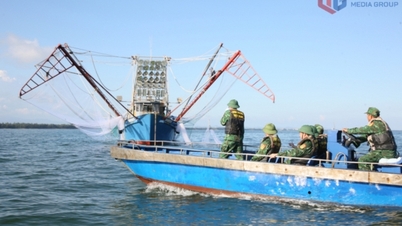

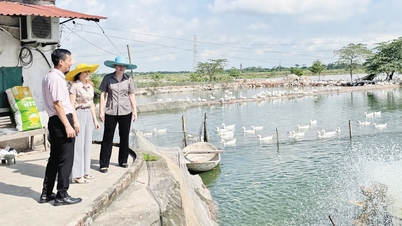

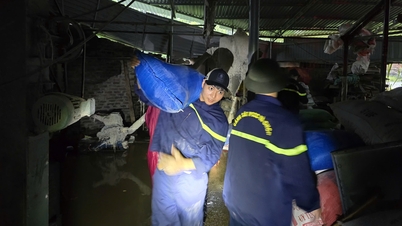











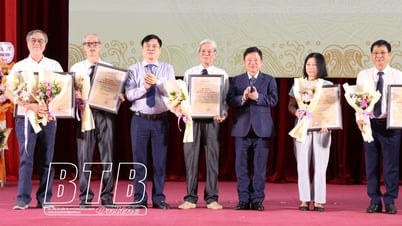











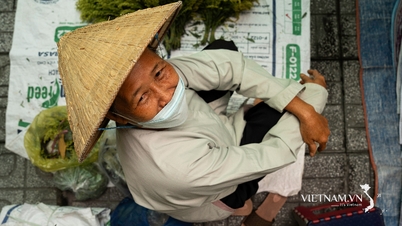


























![[VIDEO] Summary of Petrovietnam's 50th Anniversary Ceremony](https://vphoto.vietnam.vn/thumb/402x226/vietnam/resource/IMAGE/2025/10/4/abe133bdb8114793a16d4fe3e5bd0f12)

![[VIDEO] GENERAL SECRETARY TO LAM AWARDS PETROVIETNAM 8 GOLDEN WORDS: "PIONEER - EXCELLENT - SUSTAINABLE - GLOBAL"](https://vphoto.vietnam.vn/thumb/402x226/vietnam/resource/IMAGE/2025/7/23/c2fdb48863e846cfa9fb8e6ea9cf44e7)





















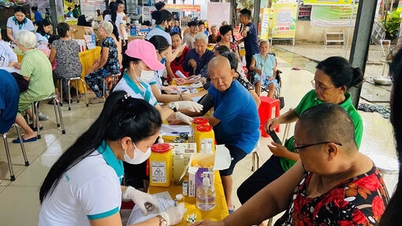

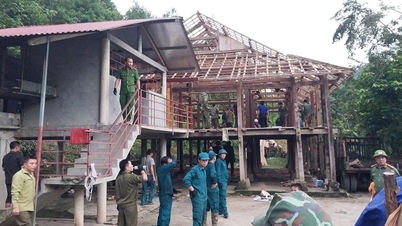

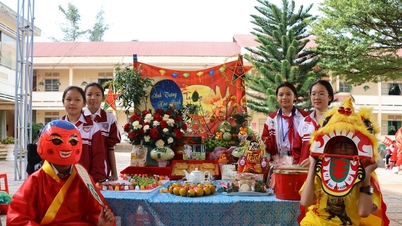









Comment (0)